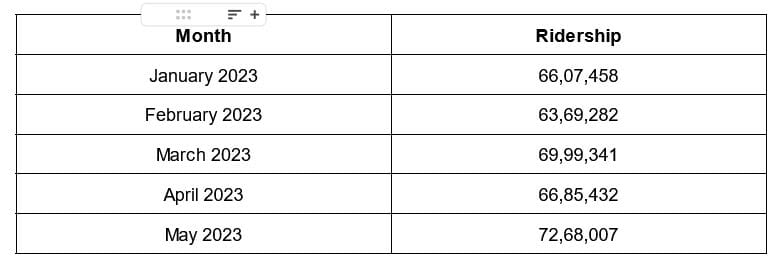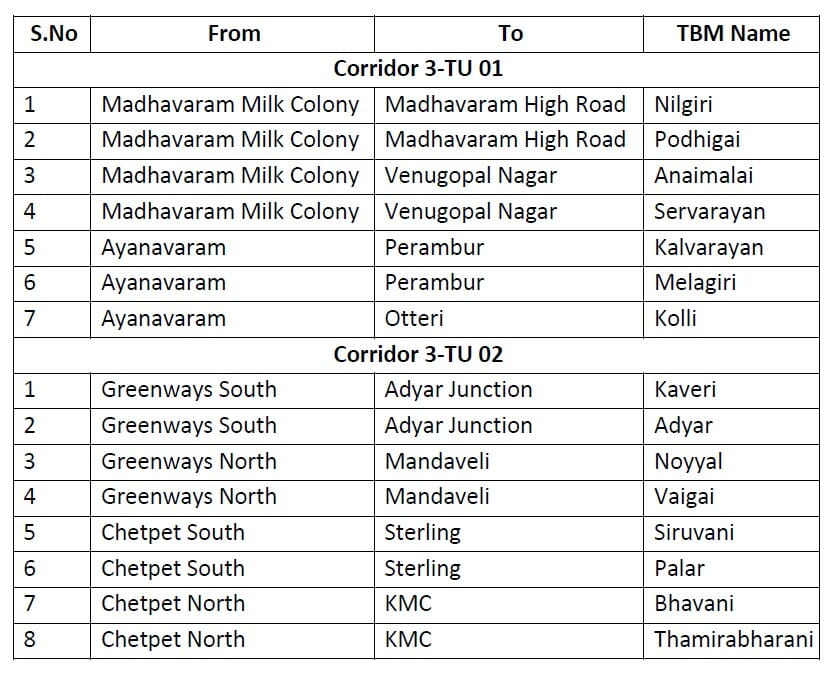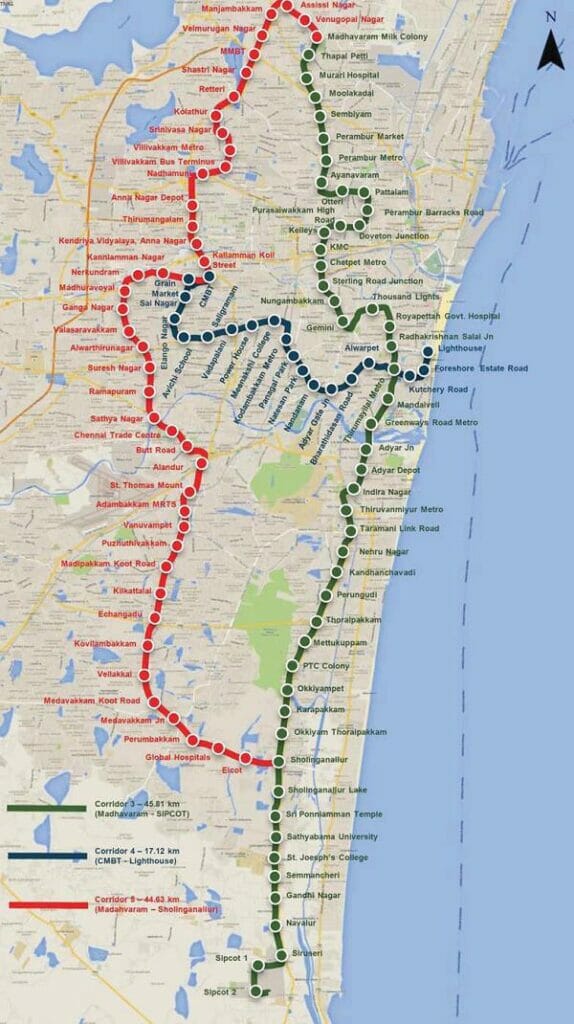“If I have to come from Alandur to Koyambedu by road, it takes me over 50 minutes. But, if I take the Metro in Chennai, it hardly takes me 12 to 15 minutes, including the wait time for the train,” says Shankar, a regular commuter on the Chennai Metro.
Clearly, for people like Shankar, the Metro has spelt significant easing of commute. With work on Phase II underway in many parts of the city, it is only likely that more passengers will embrace this mode of transport in the days to come.
The upcoming lines will link the IT corridor, among other areas, to the Metro rail network.
In the past few months, the Chennai Metro Rail Network (CMRL) has spoken of several new features that will enhance the commuter experience. There have also been several modifications to the lines in Phase II, with changes in the number of stations.
Here is a round-up of all the recent developments related to the Chennai Metro.
Ridership and ease of commute in Chennai Metro
Over the past few months, Chennai Metro Rail Service has seen a steady increase in ridership. According to data shared by CMRL, as many as 72,68,007 passengers have travelled in Chennai Metro trains in the month of May alone. In the meantime, the CMRL has been taking measures to further increase the ridership on Chennai Metro trains.

These measures include the introduction of the National Common Mobility Card (NCMC), promoted as the Singara Chennai card. While these cards can be used for travelling on metro trains now, facilities will soon be made to use the same card in the Metropolitan Transport Corporation (MTC) and Chennai Mass Rapid Transit System (MRTS). These cards will be issued by the State Bank of India at metro stations in Koyambedu, Central Station, the Airport, High Court, Alandur, Thirumangalam, and Guindy, and can be used at the automatic gates of all the metro stations. The card can be recharged at the metro stations or using the QR codes as well.
The provision to book e-tickets via Whatsapp for commuting on metro trains, with a 20% discount, has also been introduced. CMRL has also proposed plans to provide promotional tickets to potential passengers after conducting a study. These tickets are likely to be given either free or at a discount for a period of 15 days to one month, considering cost-effectiveness among other factors. The tickets are also non-transferable.
CMRL has also made it mandatory to hold a metro card to avail of parking facilities in the parking lots of the metro stations.
In the month of May 2023, a total of 26,76,546 passengers have utilised the QR Code ticketing system, 42,18,357 passengers have used Travel Card Ticketing System, 3,61,748 passengers have used Token System, 6,218 passengers have used Group Ticketing System and 5,138 passengers have used NCMC Singara, Chennai Card. Notably, CMRL has begun offering a 20% discount on Metro Travel Card and Mobile QR Code ticketing (Single, Return, Group Tickets and QR Trip passes).
Aimed at providing safe and reliable last-mile connectivity to CMRL passengers, especially women, CMRL has teamed up with Rapido, a bike taxi platform, to launch the Women Bike Taxi Captain’s Base.
“Initially, 50 Women Bike Taxi Captain’s Base will be exclusively available at several Chennai Metro stations namely Thousand Lights, Teynampet, Egmore, Saidapet, and Government Estate. This service will be extended to all Metro stations based on demand,” reads the press release from the CMRL dated April 13, 2023.
Read more: Chennai Metro Phase II: Promises, problems and expectations
Changes in original plans of Chennai Metro Phase II
Meanwhile, the work for Phase II of the Chennai Metro project has been progressing with tunnelling work commenced in a few areas. Some changes however have been made to the original plan for the number of stations that will be covered under Phase II.
According to the original plan of the Chennai Metro Phase II project, Phase II had been planned for a length of 118.9 Km network with 128 stations.
It consists of three Corridors:
- Corridor III from Madhavaram to SIPCOT (45.8 Km)
- Corridor IV from Lighthouse to Poonamalle Bypass (26.1 Km)
- Corridor V from Madhavaram to Sholinganallur (47 Km)
The estimated cost of the project is Rs 63,246 crore and the deadline for the same is in 2026.
In order to cut costs, CMRL has scrapped plans to build nine stations as part of Phase II. The decision to remove the nine stations is taken in order to save Rs 1,200 crore, too short a distance between two stations and the change of alignment.
Stations removed include:
- Thapalpetti, Doveton Junction and St Joseph College as stations on corridor III
- Foreshore Estate, Natesan Park and Meenakshi College on corridor IV
- Kaliamman Koil, Porur Junction and Medavakkam Junction on corridor V
Similarly, the original plan also says that apart from the Inter-Corridor interchange stations in Alandur and Chennai Central from Phase I, Phase II will have eight Inter-Corridor interchange stations namely, Madhavaram, Kilpauk, Thousand Lights, Mylapore, Sholinganallur, Nandhanam, Vadapalani and Porur. However, the CMRL has also scrapped the inter-corridor circular route plan due to the anticipation of low ridership in the said routes. This will now lead the passengers to take the stairs or escalator in Sholinganallur to move from corridor III to corridor V.
Further, borrowing the idea from Bengaluru, which has introduced a corporate package that gives direct access from office campuses to metro stations via walkways, the CMRL has also planned to provide direct access to the nearest metro station from the IT parks and big offices via skywalks and foot overbridges in Phase II.
Read more: Playgrounds and parks make way for Metro rail in Chennai
Tunnelling work underway for Phase II of the Chennai Metro project
According to information shared by CMRL in February, there will be a total of 23 Tunnel Boring Machines (TBM) working in Chennai city for building the extensive network of underground tunnels of Phase II. This includes new TBMs imported for work and TBMs remanufactured in India. These TBMs are to be launched and retrieved multiple times till completion from the shafts at various locations. Accordingly, the TBM was initiated at Greenways Road Station in Corridor III in February.

The underground section of corridor IV that stretches from Light House Station at Marina Beach to Kodambakkam Flyover is split into two packages (UG-01 & UG-02). Each of these two packages contains twin tunnels stretching for 4 km. Four TBMs have been proposed to execute the entire tunnelling considering both Upline & Downline tunnels.
Four TBMs have been proposed to execute the entire tunnelling for the construction of the underground metro rail project corridor IV from Light House Station at Marina Beach to Kodambakkam Flyover. This corridor will have an underground section that is split into two packages (UG-01 & UG-02) each of which contains 4 km of twin tunnels.
The construction of the TBM launching shaft is under progress at Panagal Park Station; it is expected to be ready in time to be able to lower and assemble the TBM in the month of October 2023.
Similarly, the tunnelling works in other areas are to begin at various points of time during this year. Contracts have also been awarded to companies such as L & T and Tata to carry out different parts of the construction works for Phase II of the Chennai Metro project.
Traffic, pollution and loss of trees – woes of residents
While work on Phase II is progressing at breakneck speed, it is not without inconvenience for residents and commuters.
As many as 955 trees have been uprooted for various infrastructural projects including the Chennai Metro works in the year 2022 alone. This not only highlights the loss of green cover in the city but also creates several other issues. CMRL has been drilling deeper boreholes near the trees on the side of the roads for soil tests. This has led to the weakening of the roots of the trees posing a risk to the stability of the trees. Notably, a woman in KK Nagar died after a tree fell on her car in 2022.
The lack of proper safety measures at the construction spots of metro works has also led to various accidents. In one such case, a 74-year-old man died after falling into an open pit dug for the Chennai metro works in February this year.
Not only has the metro works in Chennai caused fatal accidents but also made the daily life of the residents harder in Chennai.
“It used to take me less than 40 minutes to come from Ambattur to Arumbakkam. With the traffic diversions made in Anna Nagar, it takes me at least one hour to reach Arumbakkam now. There is no signal or traffic police to regulate the traffic. During peak hours in the evening, when many people are headed home, the traffic congestion near VR Mall due to Metro work is so frustrating. While it should take less than two minutes to cross this particular stretch, it takes at least 20 minutes to cross now,” says Sudharshan.
Abinaya, who hails from Kodungaiyur, has to come to her office in Vadapalani every day. “Riding the bike in the traffic and scorching sun is exhausting, particularly during peak hours. It spoils my mood even before the day starts. In a bid to avoid it, I start from home as early as 7 am, despite office hours beginning at 9 am,” she adds.
Revathi of Kodambakkam says that the arterial stretches in Chennai have become tough to navigate due to traffic diversions at multiple spots due to metro works. “When the dense traffic is diverted into the narrow stretches, it becomes a risk for residential areas as the increasing vehicular movement leads to frequent accidents,” she says. She also points out that the metro construction has led to an increase in pollution in the localities, leading to allergies among children and senior citizens.
Residents evidently welcome the Chennai Metro Rail project, as it promises to improve their daily commute amidst the bustling traffic in the city. But authorities must also take into account the hardship and inconveniences for many, as they try to navigate the construction spots and adjoining areas. As the work on Phase II is set to go on for at least two more years in many parts of the city, this is something that needs to be addressed urgently.

